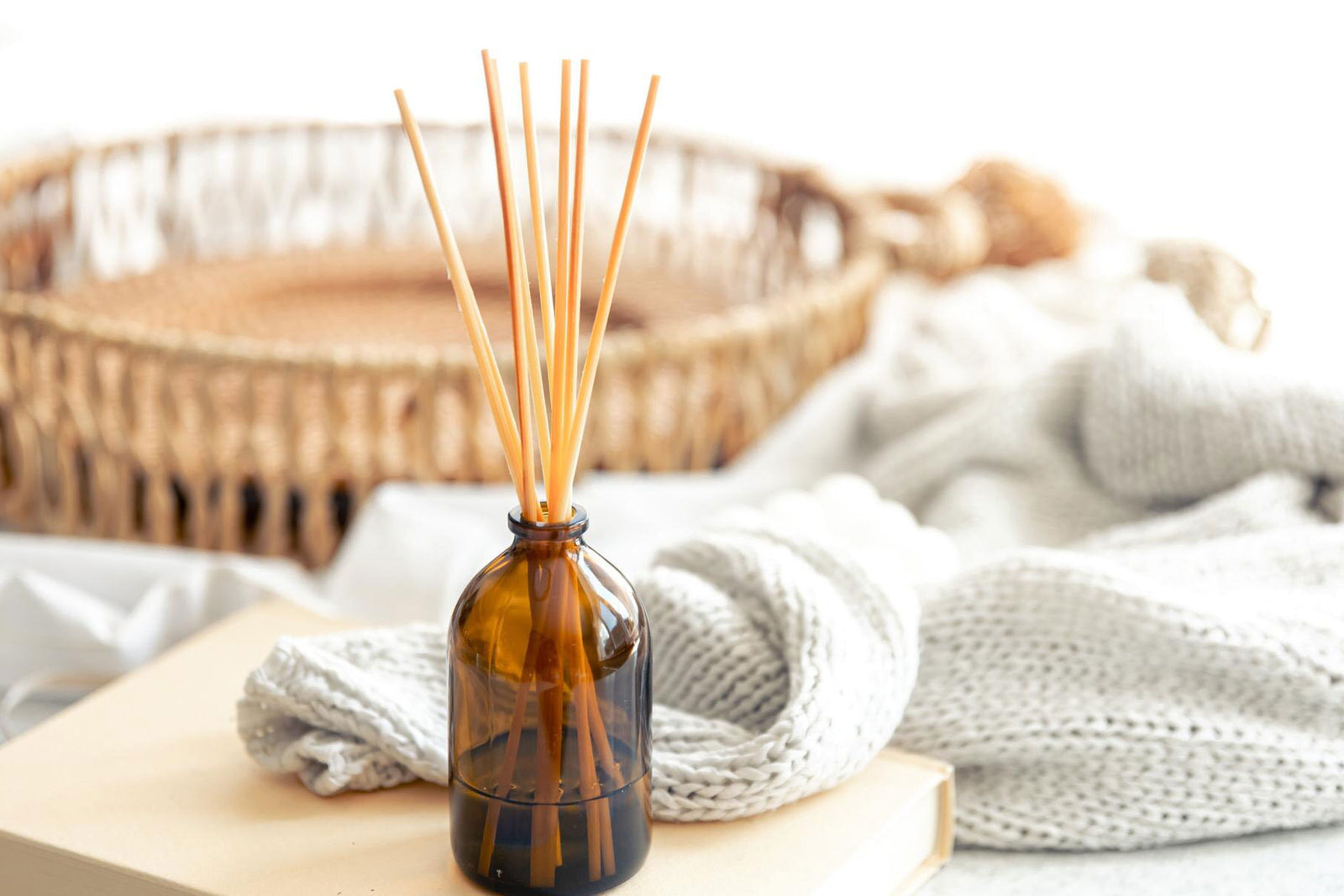What is Incense? Is Incense Bad for You? - Things You Should Know

Growing up in a household where incense was always burning, I developed a deep appreciation for its soothing aroma and calming effects. Incense has been used for centuries in various cultures for spiritual rituals, meditation practices, and even as a bug repellent. In this blog post, we'll look into the world of incense and discuss its various traditional uses, its various types, and the possible health risks posed by incense. So, if you've ever wondered what incense is all about or if it's terrible for you, keep reading to find out more.
Key Points:
- Incense can create a soothing atmosphere and promote relaxation.
- There are potential health risks associated with incense, such as respiratory issues and indoor air pollution.
- For safe and responsible use, it is essential to use natural and high-quality incense, burn it in a well-ventilated area, and limit exposure to smoke.
- To avoid accidents, it is mandatory to follow the safety guidelines, such as using a suitable burner and keeping incensed away from flammable materials.
- By using incense safely and responsibly, you can enjoy its benefits without compromising your health.
Pros of Incense:
- Aromatherapy Benefits: Incense can be used to promote a sense of relaxation, reduce stress, and enhance mood.
- Spiritual and Meditative Uses: Many people burn incense to create a quiet and focused atmosphere for meditation, prayer, or spiritual rituals.
- Natural Air Freshener: Incense can effectively mask unpleasant odors and provide a pleasant fragrance in a room.
- Variety of Scents: A wide range of incense scents is available to suit different preferences and needs.
- Cultural and Traditional Significance: Incense has deep roots in many cultures and traditions and is often used in ceremonies and celebrations.
- Insect Repellent: Certain types of incense can repel insects and mosquitoes.
- Enhances Focus and Creativity: Burning incense can create an environment conducive to concentration and inspiration.
- Aesthetic Appeal: Incense holders and burners can serve as attractive decorative pieces in homes or offices.
Cons of Incense:
- Allergic Reactions: Some people may be allergic to or sensitive to incense smoke, which can cause allergies to the skin or respiratory tract.
- Fire Hazard: Incense holders or sticks can be at risk of fire if they are not adequately attended to or placed near flammable materials.
- Overpowering Scent: The pungent aroma of incense may be overwhelming or unpleasant for some individuals.
- Residue and Ash: Burning incense can leave ash and residue behind, requiring regular cleaning.
- Health Concerns: Prolonged exposure to incense smoke may have potential health implications, especially for people with preexisting respiratory conditions.
- Limited Usage in Some Spaces: Due to fire safety regulations or scent sensitivities, incense may not be allowed or welcomed in sure public or shared spaces.
These lists capture both the advantages and disadvantages of using incense, thereby helping weigh the benefits against any potential downsides.

Overview of incense and its traditional uses
Incense has a long history spanning various cultures and traditions. It is usually made from aromatic plant material, such as herbs, resins, and woods, that are dried and then burnt to release fragrant smoke. Throughout history, incense has been used for spiritual rituals, meditation practices, and creating a calming atmosphere. Its soothing aroma is often believed to purify the air and create a sacred space. Incense is well-known for its capacity for repelling bugs, which makes it a preferred option for keeping bugs out.
Common misconceptions about incense
Let's address some common misconceptions about incense. Firstly, there's a belief that incense is detrimental to health, causing respiratory issues. However, when used in moderation and a well-ventilated area, incense can be enjoyed safely without any adverse health effects. Secondly, it's often dismissed as a mere air freshener. In reality, incense carries a profound history and cultural significance, making it much more than a pleasant scent. Lastly, there's a misconception that burning incense attracts bugs. In truth, certain types of incense can actually repel insects, offering a natural bug control solution.
Types of Incense
There are various types of incense, each providing a distinct scent and experience. Natural incense is made from plant-based ingredients, such as resins, herbs, spices, and essential oils. On the other hand, synthetic incense contains artificial substances to replicate natural scents. Incense can be found in various forms, such as sticks, cones, and resins. Sticks are the most commonly used type, while cones offer a more concentrated and long-lasting fragrance. Resins are often burned on charcoal discs, releasing a pure and potent scent. Choose the type of incense that aligns with your preferences and desired effects.
Natural vs. synthetic incense
When it comes to choosing incense, there is a choice between natural and synthetic options. Natural incense is made from plant-based ingredients such as resins, herbs, spices, and essential oils. It provides a pure and authentic aroma. On the other hand, synthetic incense contains artificial substances that replicate natural scents. While synthetic incense can offer a broader range of fragrances, some people prefer the natural and holistic experience of burning natural incense. It all depends on personal preference and the desired effects.
Different forms of incense sticks and cones
There are various forms of incense sticks and cones available in the market. Incense sticks are long, thin rods made of natural materials such as bamboo infused with fragrant oils or resins. They are easy to use and provide a steady, long-lasting burn. Incense cones, as the name suggests, are cone-shaped. They offer a more concentrated and intense aroma, perfect for smaller spaces. Both sticks and cones come in different scents and blend to suit individual preferences and create the desired atmosphere.
Key ingredients in traditional incense
Traditional incense consists of various natural ingredients, such as aromatic resins, woods, herbs, and flowers. These elements are frequently mixed to form distinctive blends that emit particular aromas and offer therapeutic benefits. Some common ingredients found in traditional incense include frankincense, myrrh, sandalwood, lavender, and rose. When burned, these natural ingredients release fragrant smoke, creating a pleasant and calming aroma.
Possible health Risks associated with specific chemicals in incense
Certain chemicals found in incense smoke can pose potential health risks. For instance, benzene, a known carcinogen, has been detected in some types of incense. Additionally, delicate particulate matter, also known as PM2.5, is released when incense is burned. Breathing in these tiny particles can aggravate the lungs and worsen pre-existing respiratory issues like asthma. It is, therefore, essential to use in well-ventilated areas and avoid excessive inhalation of the smoke.

Historical and cultural uses of incense
Throughout history, incense has been used in various cultures and religions for its cultural and spiritual significance. In ancient Egypt, incense was burned to please the gods and purify the air. In Hinduism, incense is an integral part of religious ceremonies and is believed to create a sacred atmosphere. Similarly, in Buddhism, incense is used to purify the mind and create a peaceful ambiance during meditation. The cultural significance of incense extends to other traditions as well, such as Native American rituals and Japanese tea ceremonies.
Role of incense in religious ceremonies and meditation practices
Incense, with its aromatic smoke and soothing scents, creates a sensory experience that is deeply intertwined with religious ceremonies and meditation practices worldwide. The belief in its ability to elevate spiritual experiences and connect individuals to the divine is a testament to its profound impact. The calming and soothing scents of incense help create a serene environment, aiding with focus and relaxation during meditation. In religious ceremonies, incense symbolizes purification and offering to deities, allowing practitioners to express reverence and devotion. The rich cultural and spiritual significance of incense contributes to its continued use in various traditions and rituals today, offering a sensory journey into the heart of these practices.
Purifying and cleansing spaces
In religious ceremonies and rituals, incense is also used for its purifying and cleansing properties. As an Article Writer, I have learned that the smoke from incense is believed to ward off negative energies and cleanse the surrounding space. This is often done by walking or waving the incense around the area to be purified. The fragrant smoke is thought to help purify the space and create a positive and sacred atmosphere. This practice is common in various religious traditions, where incense is used to sanctify altars, temples, or other holy spaces.
Aromatherapy and relaxation
Aromatherapy and relaxation are closely linked to the use of incense. I have observed the powerful effects of incense in creating a serene and peaceful atmosphere, perfect for meditation and prayer. The calming fragrance of incense, especially varieties like lavender or sandalwood, has been known to reduce stress and promote overall well-being. When using incense for relaxation, it is essential to choose scents that resonate with your senses and personal preferences. The aromatic qualities of incense can transport individuals to a state of tranquility and deep relaxation.
Recent studies and research findings
Over the years, several studies have been conducted on the effects of incense on air quality and human health. Some recent research findings suggest that prolonged exposure to incense smoke may lead to respiratory issues, especially for individuals with pre-existing respiratory conditions. Additionally, studies have found that certain chemicals present in incense smoke can release harmful pollutants into the air, contributing to indoor air pollution. Further research is necessary to fully understand the possible health risks of using incense. However, it is recommended to only use incense in well-ventilated spaces and for limited periods.
Comparing incense smoke to other forms of air pollution
Incense smoke can contribute to indoor air pollution, but it is essential to consider it in comparison to other forms of air pollution. While incense smoke does release certain pollutants, such as volatile organic compounds (VOCs) and particulate matter, its impact may be lower compared to other familiar sources of pollution in our daily lives, such as cigarette smoke and vehicle emissions. However, it is still advisable to use incense in well-ventilated areas and minimize prolonged exposure to reduce the potential health risks.
Tips for safe and responsible use of incense
As an Article Writer, I understand the importance of using incense safely and responsibly. Here are some tips that you should follow to ensure a safe and enjoyable experience:
- Choose natural incense: Opt for natural incense made from herbs, resins, and essential oils. Avoid synthetic incense, as it may contain harmful chemicals.
- Burn in a well-ventilated area: Make sure the room is well-ventilated to avoid the accumulation of smoke and reduce the risk of respiratory irritation.
- Use a suitable burner: To prevent the risk of fire or accidents, place your incense in a heat-resistant burner or holder.
- Keep away from flammable materials: To prevent the risk of fire, do not place incense near curtains, papers, or any other combustible materials.
- Monitor burning time: Don't leave burning incense unattended. Extinguish it properly after a reasonable period to avoid accidents.
- Limit exposure: Although incense can be pleasant, it is recommended to use it in moderation to reduce the potential health risks from prolonged inhalation of smoke.
Conclusion
In conclusion, incense has a long history of use in various cultures for both spiritual and practical purposes. While there are a few potential health risks associated with certain chemicals in incense, these risks can be minimized by using natural and high-quality incense, burning it in a well-ventilated area, and limiting exposure. When used safely and responsibly, incense can create a pleasant and soothing atmosphere, enhance meditation and relaxation, and add a touch of spirituality to our daily lives.


